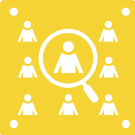
Define Needs and Uses

The rapid pace of technological innovation sometimes gives agencies and public officials a sense that they must acquire the most advanced surveillance systems in order to keep the public safe. But each community faces its own set of challenges to public safety. Every public safety investment – especially expensive surveillance equipment that could imperil citizens’ privacy – should be geared toward solving those unique problems. Agencies should start by identifying a specific public safety need before acquiring and deploying a new surveillance system. By explicitly defining the problem, an agency may be able to identify other solutions that are more cost-effective, less intrusive, and less prone to abuse than surveillance technology. If the agency decides to purchase a new surveillance system, the problem statement should form the basis of a clear set of purposes that govern when and where the system can be used, and what types of data it should capture. Nearly every community completes an annual or semi-annual analysis of crime and safety trends. If auto theft is a growing concern in your community, for example, a purpose statement such as “increase recovery of stolen vehicles” identifies a clear outcome that enables an agency to set measurable performance objectives. The agency should then closely study any potential surveillance system to determine if it has a realistic chance of helping to achieve those objectives without burdening the liberties of communities it will affect. Data from other cities and departments that have adopted that tool should be compared to data from communities that tried other solutions. This not only puts an agency in a position to make the best decision possible, it also lets members of the public understand the purpose and parameters of the program, reducing the real potential for abuse and mission creep.











